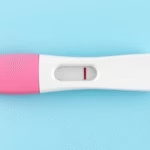Understanding Implantation Bleeding vs Period Spotting
When discussing implantation bleeding vs period spotting, it is essential to understand the differences and similarities between the two. Implantation bleeding occurs when a fertilized egg attaches itself to the lining of the uterus, usually occurring around six to twelve days after conception. This type of bleeding is typically light, lasting a few hours to a few days, and can vary in color from light pink to brown. On the other hand, period spotting refers to light bleeding that happens during a woman’s regular menstrual cycle. It is usually more significant and follows a pattern typical of the menstrual flow.
The confusion between these two types of bleeding is common, as they can present similar characteristics. Yet, recognizing the distinctions and understanding the context of each can play a crucial role in reproductive health. Accurately identifying implantation bleeding versus period spotting can aid women in understanding their body better, identifying potential pregnancy, and knowing when to consult with healthcare professionals.
Significance of Recognizing Implantation Bleeding
Identifying implantation bleeding is important for a variety of reasons. Recognizing the signs allows women to be more informed about their reproductive health and can serve as early pregnancy indicators. Many women may not realize they are pregnant until they experience these subtle changes in their bodies.
Implantation bleeding generally occurs about a week before a woman’s expected period. Women expecting their period might dismiss light bleeding as a typical sign of menstruation. Women trying to conceive often see this bleeding as a hopeful sign, allowing them to explore pregnancy tests sooner. The lighter color and blood consistency distinguish implantation bleeding from the regular menstrual cycle.
Comprehending the timing also plays a significant role. Typical menstrual cycles last about 28 days, and implantation bleeding will happen a few days before; hence, women might become curious and vigilant of its signs. It is beneficial for women tracking their ovulation and menstrual cycles, aiding them in understanding their fertility windows better.
Characteristics of Period Spotting
Spotting during a menstrual cycle can have various causes, and recognizing its characteristics helps differentiate it from other types of bleeding. Period spotting is typically experienced right before or after the more substantial flow of a menstrual period. The bleeding is integrative with the menstrual cycle, usually varying in color from bright red to dark brown, depending on the stage of the cycle.
Regular menstrual spotting can last for a short time or extend for several days. It’s common for women to have spotting due to hormonal fluctuations or changes, birth control methods, or other medical conditions such as fibroids or polyps. Distinguishing the timeline and flow can significantly assist women in identifying whether what they are experiencing is typical or indicative of an underlying issue.
Some signs of period spotting include:
- Lasts longer than a day or two.
- May accompany menstrual cramps.
- Flow pattern usually follows a typical menstrual cycle.
- Can often be darker and thicker than lighter spotting.
Understanding these traits can help women efficiently track their menstrual health and note any unusual changes that may warrant attention.
Causes of Implantation Bleeding
Implantation bleeding usually occurs when a fertilized egg embeds itself into the uterine lining. This process is often accompanied by the hormonal changes that begin when conception occurs. Symptoms that accompany this type of bleeding may vary, but they can include light cramping and mild discomfort, which is generally more subdued than typical menstrual cramps.
Hormonal levels, particularly the surge of human chorionic gonadotropin (hCG), can lead to this bleeding as the body prepares for pregnancy. Recognizing the body’s early pregnancy signals and the resultant hormonal changes is essential for anyone trying to conceive. Monitoring signs closely can make tracking easier, helping women understand their cycles better.
It is also worth noting that various factors could influence implantation bleeding, including:
- The timing of ovulation and fertilization.
- Individual hormonal balance.
- General health and stress levels.
- Medical conditions impacting menstrual regularity.
Being vigilant about these factors contributes to overall reproductive wellness and provides more insight into the potential impact of lifestyle choices.
The Timing of Spotting and Its Implications
The timing of spotting, whether for implantation or menstrual purposes, has important implications for tracking fertility and reproductive health. Understanding when these events occur in relation to a woman’s cycle can help identify whether they signify something typical or possibly suggestive of pregnancy.
Implantation bleeding can occur approximately six to twelve days post-ovulation. For women accustomed to regular menstrual cycles, any bleeding that occurs around this timeframe might raise awareness of possible pregnancy. Having knowledge about ovulation days can provide vital information for tracking potential conception and pinpointing fertile windows.
In contrast, spotting related to menstrual cycles typically occurs just before or after a woman’s expected period. When spotting occurs around the predicted date of a period, it is more likely a prelude to menstruation, although it can sometimes be a sign of hormonal fluctuations or medical conditions, such as PCOS (Polycystic Ovary Syndrome).
So, maintaining a menstrual calendar or using applications can be beneficial for tracking these events accurately and establishing a clear understanding of one’s reproductive cycle. This awareness is essential for women wishing to conceive but also for those wanting to manage their reproductive health actively.
Common Myths Associated with Implantation Bleeding
Several myths surround implantation bleeding, leading to confusion among women trying to identify symptoms of early pregnancy. Common misconceptions can influence how women perceive their reproductive health. The more informed a person is regarding implantation, the better equipped they are to recognize actual signs.
One common myth is that if any bleeding occurs, it must signify pregnancy. Though it can be an indicator, it is not definitive. Every woman’s body reacts differently to hormonal changes. Blood can signify various issues unrelated to pregnancy, making it essential to consider the broader context of symptoms.
Another common myth relates to the color of the bleeding. Many believe that implantation bleeding must always appear as light pink. However, it can also present as brown or even red. The key takeaway is to focus on the timing and flow.
Additionally, some may think that implantation bleeding must be accompanied by significant symptoms. It is frequently light and can occur without any additional symptoms. Keeping this in mind allows women to be more aware and avoid overanalyzing every change in their bodies.
Myths can create unnecessary anxiety for women who are either trying to conceive or trying to manage their reproductive health, stressing the importance of seeking reliable medical advice.
When to Consult a Healthcare Professional
Understanding the right time to consult a healthcare professional can be crucial for women experiencing any type of bleeding. In cases of implantation bleeding, if it is accompanied by excessive pain, cramping, or an unusual flow that lasts beyond a couple of days, it may be an indicator of an underlying issue.
Women experiencing spotting that differs significantly from their standard menstrual patterns should also seek advice. The sudden appearance of atypical bleeding can indicate hormonal imbalances, polyps, or more severe conditions. Early detection is often linked to more effective treatments and better health outcomes.
Signs that should urge women to seek medical attention include:
- Bleeding that is heavier than a typical menstrual period.
- Severe abdominal pain that does not resolve.
- Unusual clots in the blood.
- Persistent bleeding over an extended period.
Consulting with a healthcare professional is critical not only for determining whether the bleeding signifies pregnancy but also ensuring overall reproductive health. Regular check-ups and open discussions with health providers can mitigate concerns and encourage proactive management of reproductive health.
Final Thoughts
The exploration of implantation bleeding vs period spotting highlights the importance of understanding one’s body. Recognizing the differences in timing, characteristics, and underlying causes of each type of bleeding can empower women in monitoring their reproductive health effectively. Understanding these can also support women trying to conceive by being aware of possible signs of early pregnancy and acting accordingly.
Being informed can mitigate anxiety related to unexpected changes in the menstrual cycle and encourage earlier access to healthcare when necessary. Acknowledging common myths surrounding implantation bleeding and period spotting fosters a healthier dialogue about women’s health. It encourages women to take charge of their reproductive health, leading to a more engaged and informed approach to managing their cycles and potential pregnancies.
For women experiencing any unusual symptoms or discrepancies in their patterns, it is crucial to consult a healthcare professional. They can provide tailored advice and support, ensuring that any underlying health conditions are addressed. Recognizing the relevance of tracking menstrual cycles and understanding different types of bleeding can serve as an essential aspect of reproductive wellness.
FAQs
1. What is the best way to tell the difference between implantation bleeding and period spotting?
Duration, flow, and timing are key factors. Implantation bleeding usually occurs about a week before a missed period and is typically light. In contrast, period spotting usually follows a more defined cycle and may be darker.
2. Can you experience cramping with implantation bleeding?
Yes, light cramping can accompany implantation bleeding, though it is usually less intense than menstrual cramps.
3. When should I take a pregnancy test after experiencing implantation bleeding?
It is advisable to wait a few days after the bleeding occurs for more accurate results, as the hormone levels may not be detectable immediately.
4. Is it normal to have spotting during the early stages of pregnancy?
Some light spotting can be normal due to implantation, but if it becomes heavy or painful, it is advisable to consult a healthcare professional.
5. Can stress cause spotting?
Yes, stress can impact hormonal levels and can lead to irregularities in spotting. It is important to manage stress and monitor fluctuations in menstrual patterns.
Further Reading
What Type of Psychotherapy Is Best for Anxiety?







